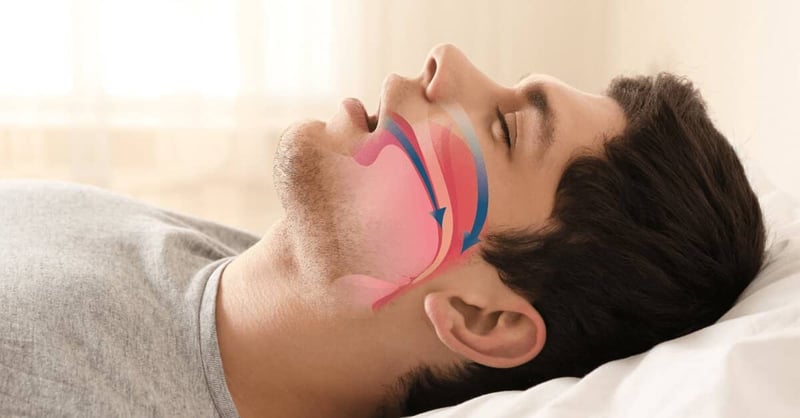What is Obstructive Sleep Apnea?
Published on: February 13, 2022 | Reading time: 🕐 3m

What is sleep apnea?
Sleep apnea is a common sleep disorder characterized by repeated interruptions in breathing during sleep, known as apneas. These interruptions occur when the muscles in the throat relax and collapse, obstructing the airway and disrupting the normal flow of oxygen.
Apneas can happen dozens or even hundreds of times per night, severely impacting sleep quality. Consequently, individuals with sleep apnea experience significant daytime effects, such as excessive sleepiness, difficulty concentrating, and mood disturbances.
One of the hallmark symptoms of sleep apnea is loud snoring, often noticed along with breathing interruptions by a sleeping partner or family member. Other signs include waking up abruptly with shortness of breath or choking sensations, night sweats, frequent urination at night, dry mouth or sore throat upon waking, and morning headaches.
What causes sleep apnea?
Sleep apnea stems from a combination of anatomical, physiological, and lifestyle factors1. Having a narrow throat or being overweight can raise the risk. Age-related muscle tone changes, more pronounced in older adults, and gender differences, with men facing a higher risk, also play a role. Lifestyle habits such as smoking and drinking worsen sleep apnea by promoting airway narrowing and muscle relaxation. Additionally, genetic factors, medical conditions such as high blood pressure and diabetes, and taking certain medications like sleeping pills can contribute to the condition.
If you show signs of sleep apnea, it is important to talk with your family doctor or a licensed medical provider about getting a thorough evaluation and discussing suitable treatment options. Without treatment, sleep apnea can have serious long-term consequences for your health and well-being2, including risks of cardiovascular disease, stroke, obesity, diabetes, depression, and accidents.
What are the treatment options for sleep apnea?
Treatment of sleep apnea aims to improve breathing during sleep and tackle underlying causes. Common approaches include continuous positive airway pressure (CPAP) therapy, which involves a machine delivering a steady airflow through a mask worn over the nose or mouth. Alternatively, oral appliances can be used to keep the airway open by positioning the jaw forward during sleep. Lifestyle changes such as weight loss, quitting smoking, and reducing alcohol intake can also be helpful. In some cases, surgery may be suggested to address anatomical issues contributing to airway blockages.
If you're also struggling with insomnia, it's important to remember that obstructive sleep apnea (OSA) could be the root cause or exacerbating factor. Many individuals who have both conditions find that once their OSA is effectively managed, their insomnia symptoms also improve. That's why it's crucial to discuss your OSA with a healthcare professional. If you're still experiencing insomnia even after addressing your OSA, we encourage you to explore HALEO's insomnia program, conveniently accessible through our mobile application. Click here to learn more about chronic insomnia and the recommended treatment options.
Written by Cherie La Rocque, PhD, RPsych
References:
1.Young, T., Skatrud, J., & Peppard, P. E. (2004). Risk factors for obstructive sleep apnea in adults. JAMA, 291(16), 2013-2016. Retrieved from: Risk Factors for Obstructive Sleep Apnea in Adults | JAMA | JAMA Network2.Javaheri, S., Barbe, F., Campos-Rodriguez, F., Dempsey, J. A., Khayat, R., Javaheri, S.,... Somers, V. K. (2017). Sleep apnea: types, mechanisms, and clinical cardiovascular consequences. Journal of the American College of Cardiology, 69(7), 841-858. Retrieved from: Sleep Apnea: Types, Mechanisms, and Clinical Cardiovascular Consequences | Journal of the American College of Cardiology (jacc.org)
Need help with your sleep?
We can help you! HALEO offers a solution that can contribute to productivity and well-being through quality sleep. Schedule a discovery meeting by booking your time here.




